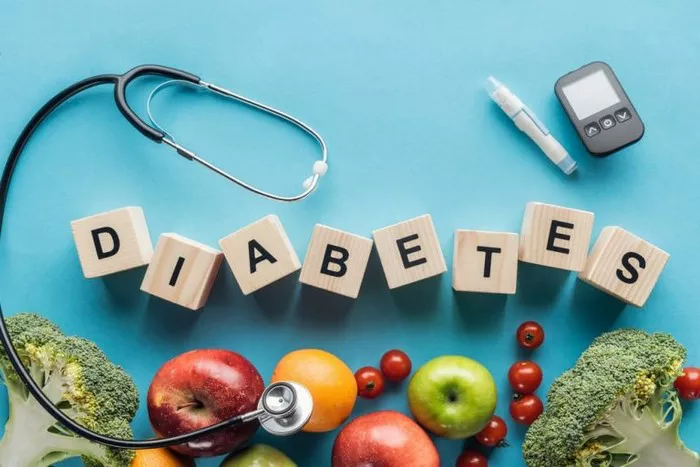Type 2 diabetes is a chronic condition characterized by high blood glucose levels resulting from insulin resistance or inadequate insulin production. Lifestyle factors, including diet, play a significant role in the development and management of type 2 diabetes. While no single vegetable directly causes type 2 diabetes, the overall dietary pattern, including the types and quantities of vegetables consumed, can influence diabetes risk. This article will explore how certain vegetables and dietary habits may impact type 2 diabetes risk, provide insight into healthy eating patterns, and offer guidance on how to make informed dietary choices.
Understanding Type 2 Diabetes
Type 2 diabetes occurs when the body’s cells become resistant to insulin or when the pancreas does not produce enough insulin to maintain normal blood glucose levels. The condition is often linked to obesity, physical inactivity, and poor dietary habits. Over time, high blood glucose levels can lead to serious complications, including cardiovascular disease, neuropathy, nephropathy, and retinopathy.
Risk Factors for Type 2 Diabetes
Several factors contribute to the development of type 2 diabetes, including:
Genetics: A family history of diabetes increases the risk.
Obesity: Excess body fat, especially around the abdomen, contributes to insulin resistance.
Physical Inactivity: Lack of exercise can lead to weight gain and insulin resistance.
Unhealthy Diet: A diet high in refined carbohydrates, sugars, and unhealthy fats can increase diabetes risk.
Age: The risk of type 2 diabetes increases with age.
The Role of Vegetables in Diabetes Risk
Vegetables are a crucial component of a healthy diet and offer numerous health benefits. They are rich in vitamins, minerals, antioxidants, and dietary fiber, which contribute to overall health and can help manage blood glucose levels. However, the impact of vegetables on diabetes risk depends on various factors, including their type, preparation method, and the overall diet.
Nutritional Composition of Vegetables
Vegetables vary in their nutritional composition, and their effects on blood glucose levels can differ. Key components to consider include:
Carbohydrates: Vegetables contain carbohydrates, but the type and amount can vary. Non-starchy vegetables, such as leafy greens and cruciferous vegetables, are low in carbohydrates and have a minimal impact on blood glucose levels. Starchy vegetables, like potatoes and corn, have a higher carbohydrate content and can cause more significant increases in blood glucose.
Fiber: Dietary fiber, found in many vegetables, can help slow the absorption of glucose and improve blood sugar control. Fiber-rich vegetables, such as broccoli and Brussels sprouts, are beneficial for managing diabetes.
Glycemic Index (GI): The glycemic index measures how quickly a food raises blood glucose levels. Low-GI vegetables have a minimal effect on blood sugar, while high-GI vegetables can cause more rapid increases.
Starchy Vegetables and Blood Glucose
Starchy vegetables, such as potatoes, corn, and peas, have a higher carbohydrate content compared to non-starchy vegetables. These vegetables can contribute to higher blood glucose levels if consumed in large quantities or prepared in ways that increase their glycemic impact. For instance:
Potatoes: Potatoes are high in carbohydrates and can cause significant increases in blood glucose levels. The method of preparation, such as baking, frying, or boiling, can affect the glycemic index. Baked or fried potatoes typically have a higher GI compared to boiled potatoes.
Corn: Corn is another starchy vegetable that can impact blood glucose levels. It contains more carbohydrates than non-starchy vegetables and can contribute to elevated blood sugar if consumed in excess.
Peas: While peas are a good source of protein and fiber, they also contain carbohydrates that can affect blood glucose levels. Moderate consumption is generally recommended.
Non-Starchy Vegetables and Diabetes
Non-starchy vegetables, such as leafy greens, cruciferous vegetables, and peppers, are low in carbohydrates and have a minimal impact on blood glucose levels. These vegetables provide essential nutrients and are beneficial for overall health and diabetes management. Examples include:
Leafy Greens: Spinach, kale, and Swiss chard are low in carbohydrates and high in fiber, vitamins, and minerals. They can help regulate blood glucose levels and provide numerous health benefits.
Cruciferous Vegetables: Broccoli, cauliflower, and Brussels sprouts are rich in fiber and antioxidants. They have a low glycemic index and can support healthy blood sugar levels.
Bell Peppers: Bell peppers are low in carbohydrates and high in vitamin C. They have a minimal impact on blood glucose and are a healthy addition to a diabetes-friendly diet.
Dietary Patterns and Diabetes Risk
While specific vegetables themselves do not cause type 2 diabetes, dietary patterns that include excessive consumption of starchy vegetables, processed foods, and sugary beverages can contribute to the development of diabetes. A balanced diet that emphasizes a variety of vegetables, lean proteins, whole grains, and healthy fats is essential for managing diabetes risk.
Healthy Eating Patterns
Adopting a healthy eating pattern can help prevent or manage type 2 diabetes. Key recommendations include:
Choose Non-Starchy Vegetables: Incorporate a variety of non-starchy vegetables into your meals, such as leafy greens, cruciferous vegetables, and colorful bell peppers. These vegetables are low in carbohydrates and provide essential nutrients.
Moderate Starchy Vegetable Intake: While starchy vegetables can be part of a healthy diet, it is important to consume them in moderation. Opt for smaller portions and pair them with non-starchy vegetables and lean proteins to balance the meal.
Watch Portion Sizes: Pay attention to portion sizes, especially for starchy vegetables and foods with high glycemic indices. Using smaller portions and combining starchy vegetables with fiber-rich foods can help manage blood glucose levels.
Limit Processed Foods: Reduce the intake of processed foods and sugary beverages, as they can contribute to weight gain and insulin resistance. Focus on whole, unprocessed foods for optimal health.
Meal Planning for Diabetes Management
Effective meal planning is crucial for managing blood glucose levels and overall health. Consider the following tips for diabetes-friendly meal planning:
Plan Balanced Meals: Aim to include a variety of non-starchy vegetables, lean proteins, and whole grains in each meal. Balancing macronutrients can help stabilize blood sugar levels.
Incorporate Fiber: Choose fiber-rich vegetables and whole grains to help slow glucose absorption and improve blood sugar control.
Monitor Blood Glucose: Regularly monitor your blood glucose levels to understand how different foods and portion sizes affect your blood sugar. Adjust your diet based on these observations and your healthcare provider’s recommendations.
The Impact of Cooking Methods
The way vegetables are prepared can influence their glycemic impact and overall health benefits. Healthier cooking methods can help retain the nutritional value of vegetables and support diabetes management.
Healthy Cooking Methods
Steaming: Steaming vegetables preserves their nutrients and minimizes the need for added fats or oils. This method is ideal for non-starchy vegetables like broccoli and spinach.
Roasting: Roasting vegetables with minimal added fats can enhance their flavor and texture. Opt for a moderate amount of olive oil and seasonings to keep the dish healthy.
Boiling: Boiling vegetables can lead to nutrient loss, but it is a suitable method for starchy vegetables like potatoes. Consider boiling and then mashing or adding to soups for balanced meals.
Avoiding Unhealthy Preparations
Frying: Frying vegetables in large amounts of oil can increase their calorie and fat content. This method is best avoided or used sparingly.
Adding Sugary Sauces: Avoid adding sugary or high-fat sauces to vegetables, as they can increase the glycemic impact and overall calorie content of the meal.
See also: What Diabetes Medication is Used for Weight Loss?
Conclusion
No single vegetable directly causes type 2 diabetes. However, dietary patterns that include excessive consumption of starchy vegetables, processed foods, and sugary beverages can contribute to the risk of developing diabetes. To manage diabetes risk and maintain overall health, focus on a balanced diet that emphasizes non-starchy vegetables, moderate starchy vegetable intake, and healthy cooking methods. Adopting a diabetes-friendly eating pattern, combined with regular physical activity and proper medical care, is essential for preventing and managing type 2 diabetes. By making informed dietary choices and maintaining a healthy lifestyle, individuals can effectively manage their blood glucose levels and reduce the risk of diabetes-related complications.
Related topics:
What Tablets Are Best for Diabetics?



























